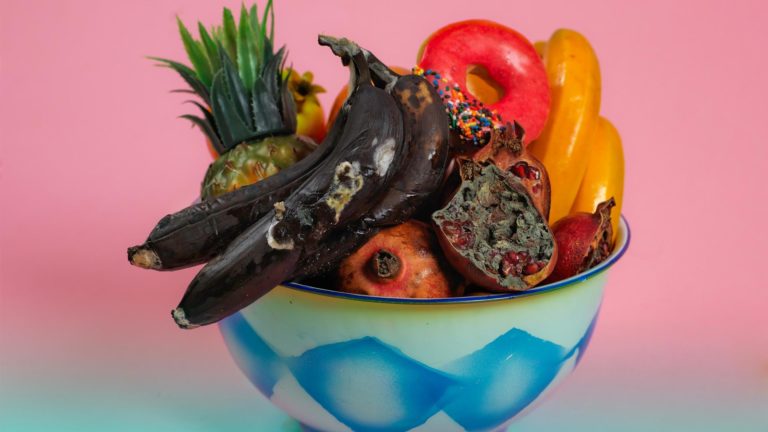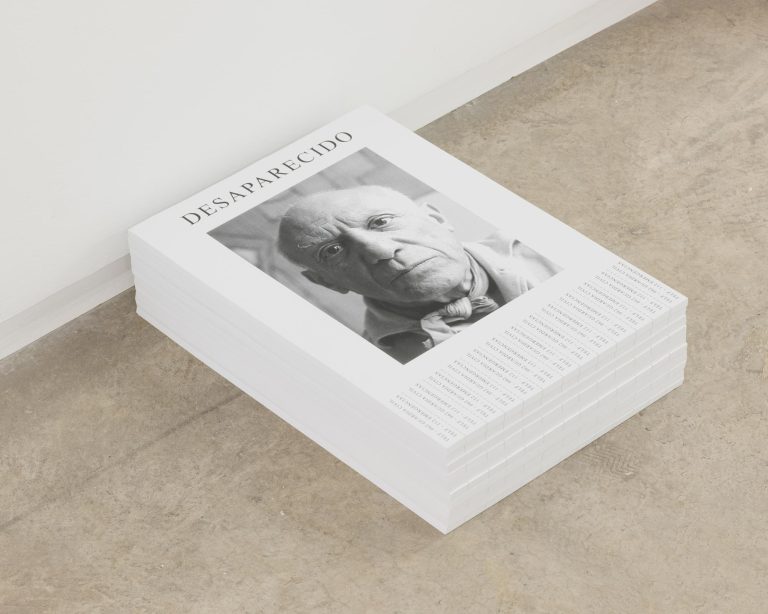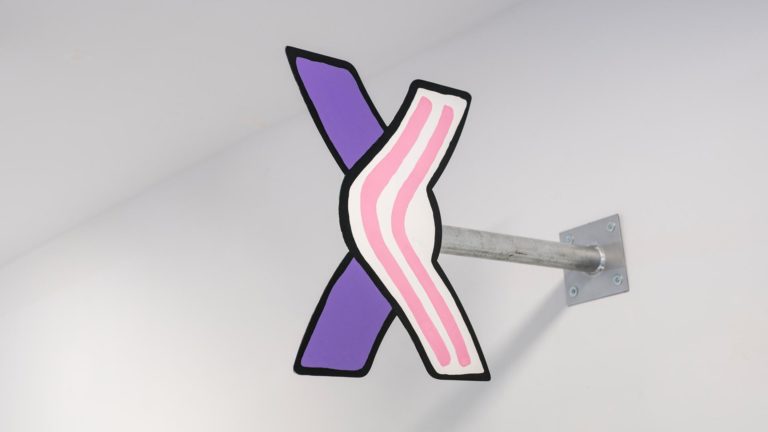Artist: Mar García Albert
Exhibition title: A Perpendicular Arrangement
Venue: sis galeria, Sabadell, Spain
Date: March 2 – May 5, 2018
Photography: all images copyright and courtesy of the artist and sis galeria, Sabadell
A List that Could Change
Glòria Guso — Martí Manen
1.
Thinking in historical terms, thinking about what should be recovered, thinking of objects, thinking of moments. Feeling the need to rummage through details, through rejects. If they were rejects, if something could actually be considered a reject. And beginning to compose. To compose almost with a microscopic gaze, starting from a specific place – a warehouse, for instance – to begin to weave paths. The possibility of paths or leaps in an ever-changing diagram. Assuming that every construction is the result of a desire or a will, as well as of an option that emerges as an escape route.
2.
Up and down; to praise or to demystify; to vex. As to the soccer player and gallery owner, that’s another story.
Transforming, through painting, a waxed eyebrow and the artificial tan of the TV soccer commentator into art. Aesthetics (philosophical doctrine) and cosmetics (body beautification treatment). And at the same time, removing a legitimate art (or one that aspires to legitimacy) that had been forgotten (that didn’t quite fulfil the function for which it had originally been conceived) from a warehouse and making it into an obstacle in space. An obstacle that prevents us from looking at things from a distance, that forces us to get too close up, to confront the image of the TV commentator transformed into a legitimate art object. Objects and images that follow opposite routes to meet in one and the same space, albeit at different levels. Together but not in each other’s pockets, though yes.
3.
Obstacle. To think in terms of obstacles, to approach an artwork almost as if it were a bother, almost like a detail that forces you to make a great detour. And then comes time, then comes being aware of the detour, of the route, of the movement, of the decision-making, of the importance of the gaze, of how we react, of that which exists and we don’t see.
3.2
Obstacles are also inspiring. The pizza-shop sign, the sticker on the metro window. It’s in the centre of the field of vision, but our memory tends to omit it from the image as a whole. Here it is the main character, and appears at the heart of truth. It asserts itself or else becomes independent.
4.
Textures, wrappings. Mar García Albert and the gaze starting from scratch. To erase everything. No, even better, to see everything in order to create a different route in which what has been learnt gives way to a way of working with feelings and desires. And then, textures and wrappings form a part of the same thing, and are the same thing, and the fact of something being a category or a function makes no difference. Everything can be everything. And principles and stories fall apart and we can no longer look in the same way. Or think in the same way.
5.
Using space and what it contains to reinforce an idea. Anything can be used: the floor, an overturned table, the display cabinet, the walls. The idea of circulation pervades everything. The circulation of the artist in the city, that of the viewer in the exhibition space, the categories that define art.
The image of paintings hanging on trunks of pine trees. In a landscape of the Vallès region, the place where four pine trees form a forest. And then – along with the paintings – they will also become a museum, a monument; the historicity of easy-going moments.
6.2
The idea of the portable taken to the extreme. Installing an exhibition as if it were a picnic; the surroundings eventually attach meaning to everything: to the place, to what is seen, to what is consumed.
7.
Planes. Vertical and horizontal. Using basic dimensions to create a space before finally disassembling it with connecting lines. And characters, because the definition of something like a space requires a number of characters to trigger situations. Context and situation and the interaction between these two elements. The context calls for study, the situation calls for action. Like the paintings in the studio: seen from the front or the back, together or separately, here or there. The discourse depends on the moment, on the situation and on the relations that become visible at a given moment. There’s no stability but movement and change. And a pizza. With lots of cheese or with less cheese. Halfway between the plate and the mouth. And again the TV announcer, with his shirt about to burst open and wearing very tight trousers. A history painting. A painting.
8.
‘And trying to occupy unusual spaces.’
9.
On the one hand, a conception of space that forces a new working method, and on the other, a series of items triggered by painting. And everything interrelated. To think in terms of place and to think of the moment when images appear. Images and moments – as well – within the very images, like that background detail that could initially go unnoticed and yet will end up becoming the key element defining the image, doing away with the close-up, breaking up the narrative that had been proposed.
10.
The power of the image and its military use, pictorial tradition in order to overcome time. And how images became speed, and how it’s increasingly likely that they contain mistakes. If images can contain mistakes.
11.
To remember a dog that was a painting. A dog that wasn’t necessarily a Goyaesque dog. A dog with nothing outstanding (if it’s possible to consider living creatures according to whether or not they have outstanding features). In a painting by Mar García Albert. A selection too, a random gesture which is also the possibility of deciding from the artist’s position. The possibility of suggesting things to ensure they remain. And that’s where Mar stands, hurling things into the future.
12.
Paintings that will end up drying later. The idea of permanence also in progress, also on standby. And a certain degree of chaos. To allow chaos or the possibility for something to continue. It was a show at La Capella, a demystified space that has preserved that stillness and control of movements and gazes, that control of performativity. To allow incredulity too. To touch the paint in order to check if it is really still wet. To get dirty and to dirty everything. To become an accomplice.
13.
In this show at sis galera Mar García Albert moves between difficulty and speed, between feeling out of place and considering the situation. Generating moments that await us, crouching, seeking the moment when everything could reappear. Working on boundaries and doing so fearlessly, from a very very short distance that allows for its possibility.
14.
The subjective gaze and fixing the moment. Turning the moment around. Making the possibility of something existing beyond language actually feasible. Trying to separate the image from its moment to guarantee its condition as an image, or a new image, or the trace of an image that starts to come to life above and beyond the moment.























